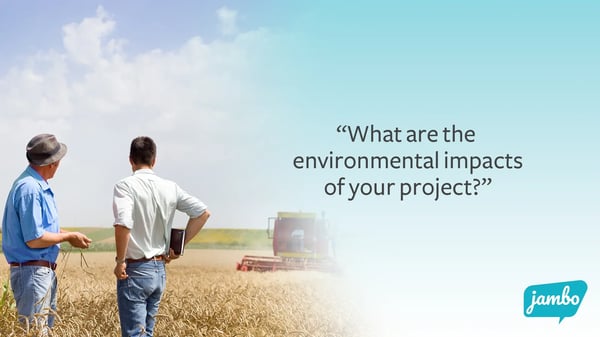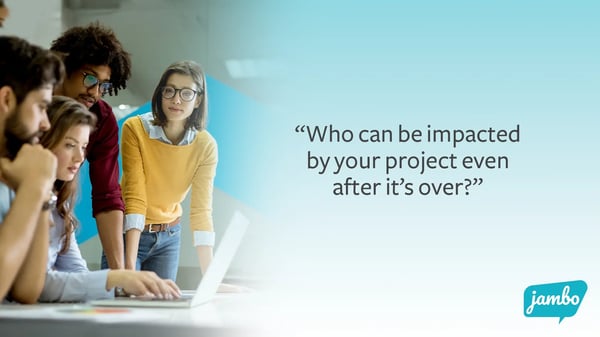
When discussing stakeholder analysis or conducting a stakeholder mapping exercise, we often emphasize the importance of identifying your stakeholders from the outset. But this raises a key question: How do you identify your key stakeholders if you're unsure who they are to begin with? In this blog post, we answer the question, "How do I identify my key stakeholders?" and provide some questions to help you identify them. We also discussed what to do after identifying them and how SRM software helps identify stakeholders.
What are stakeholders?
According to the IFC, a stakeholder is described as:
"Les parties prenantes sont des personnes ou des groupes qui sont directement ou indirectement affectés par un projet, ainsi que ceux qui peuvent avoir des intérêts dans un projet et/ou la capacité d'influencer son résultat, que ce soit de manière positive ou négative"¹.
Comment identifier mes principales parties prenantes ?
Are you wondering how to identify your key stakeholders? The first step is to ask the right questions that help identify everyone who has a stake in your project, whether directly or indirectly. By answering these questions, you can uncover the people, groups, and/or communities essential to your project's success.
To help kickstart your stakeholder identification process, we've compiled a list of nine essential questions designed to help you uncover exactly who your stakeholders are. Use these questions to clarify and map out the key individuals and groups that your project will impact or be impacted by.
Quelles sont les questions à se poser pour identifier les principales parties prenantes ?
Avec votre équipe, utilisez ces questions pour vous aider à comprendre qui pourrait être affecté par votre projet (positivement ou négativement) ou qui pourrait être intéressé par votre projet (les intérêts peuvent être financiers, émotionnels, environnementaux, etc.) Les personnes, groupes de communautés, que vous identifiez en répondant à ces questions sont vos parties prenantes.

1. Will your project disrupt neighbourhoods or community spaces?
Réfléchissez à des questions telles que
- Votre projet sera-t-il source de bruit (par exemple, le bruit de la construction) ?
- Are you developing in an area people might feel strongly about (e.g. a green space)?
- Votre projet bloquera-t-il les vues que les gens pourraient apprécier ?
- Y aura-t-il des blocages ou des déviations temporaires des routes ?
Dans l'affirmative, citez les personnes, les communautés, les navetteurs et les organisations susceptibles d'être touchés ou de s'intéresser à ces développements.
2. Is your project occurring on or near traditional territory?
Réfléchissez à des questions telles que
- Des communautés indigènes ou tribales seront-elles intéressées ou affectées ?
- Y a-t-il des communautés indigènes ou tribales qui souhaiteraient participer au projet ?
- Existe-t-il des réglementations ou des attentes qui doivent/devraient être mises en place ?
3. Will your project impact other organizations?
Réfléchissez à des questions telles que
- Votre projet créera-t-il une concurrence pour d'autres entreprises ?
- Will your project impact any businesses that people might feel strongly about (e.g., local businesses or businesses with a high level of local employment, etc.)?
- If so, name the people, communities and organizations who might be impacted (this can include specific organizations you might impact, along with people who are loyal to those organizations and who utilize or rely on them)

4. What are the environmental impacts of your project?
Réfléchissez à des questions telles que
- Existe-t-il des groupes d'intérêt qui pourraient avoir un point de vue sur votre projet ? (il peut s'agir d'associations ou de clubs, etc.)
- Votre projet aura-t-il un impact sur le territoire ?
- Votre projet aura-t-il un impact sur l'environnement de la communauté (qualité de l'eau, qualité de l'air, etc.) ?
- Dans l'affirmative, citez les personnes, les associations, les groupes, les communautés et les organisations susceptibles d'être concernés ou intéressés.
5. Are there internal stakeholders to consider?
Pensez à des groupes tels que
- Les employés ?
- Gestionnaires/décideurs ?
- Les actionnaires ?
- Membres du conseil d'administration ?
- Entrepreneurs
6. Who influences your stakeholders?
Réfléchissez à des questions telles que
- Existe-t-il des leaders communautaires dont les opinions sur votre organisation ou votre projet pourraient influencer le point de vue des parties prenantes ou des communautés ?
- Les médias auront-ils une influence sur votre projet ?
7. Who controls or influences this project's required resources (or funding)?
Consider a question like:
- Qui a une influence ou un contrôle sur le budget ?
8. Who influences approvals or permissions for this project?
Réfléchissez à des questions telles que
- Qui examine la gestion des risques pour le projet ?
- Who approves changes?
- Existe-t-il des exigences réglementaires à respecter (gouvernement, autorités de régulation, etc.) ?

9. Who can impact your project even after it's over?
Prenons une question comme celle-là :
- Could there be any additional or lingering effects for anyone after your project completion date?
Rappelez-vous : ce n'est pas parce que votre projet est terminé qu'il ne peut pas continuer à avoir un impact sur les parties prenantes et les communautés.
Que dois-je faire une fois que j'ai identifié mes parties prenantes ?
Une fois que vous aurez répondu à ces questions, vous aurez identifié les principales parties prenantes susceptibles d'être affectées par votre projet ou intéressées par celui-ci.
Use these stakeholders to build your key stakeholders list, then conduct a stakeholder analysis exercise to examine your key stakeholders more closely!
How software helps in identifying stakeholders
Stakeholder engagement software like Jambo makes stakeholder identification fast and reliable by centralizing contacts, organizations, and interactions in one place. Use stakeholder engagement software to import existing stakeholder lists, tag stakeholders by role, region, and topic, and capture stakeholder referrals from meetings to surface missing voices. With filters for influence, interest, and impact, stakeholder sentiment features, and analytics to review engagement that has occurred, your team can quickly map who matters, spot gaps, and prioritize outreach using Jambo.







